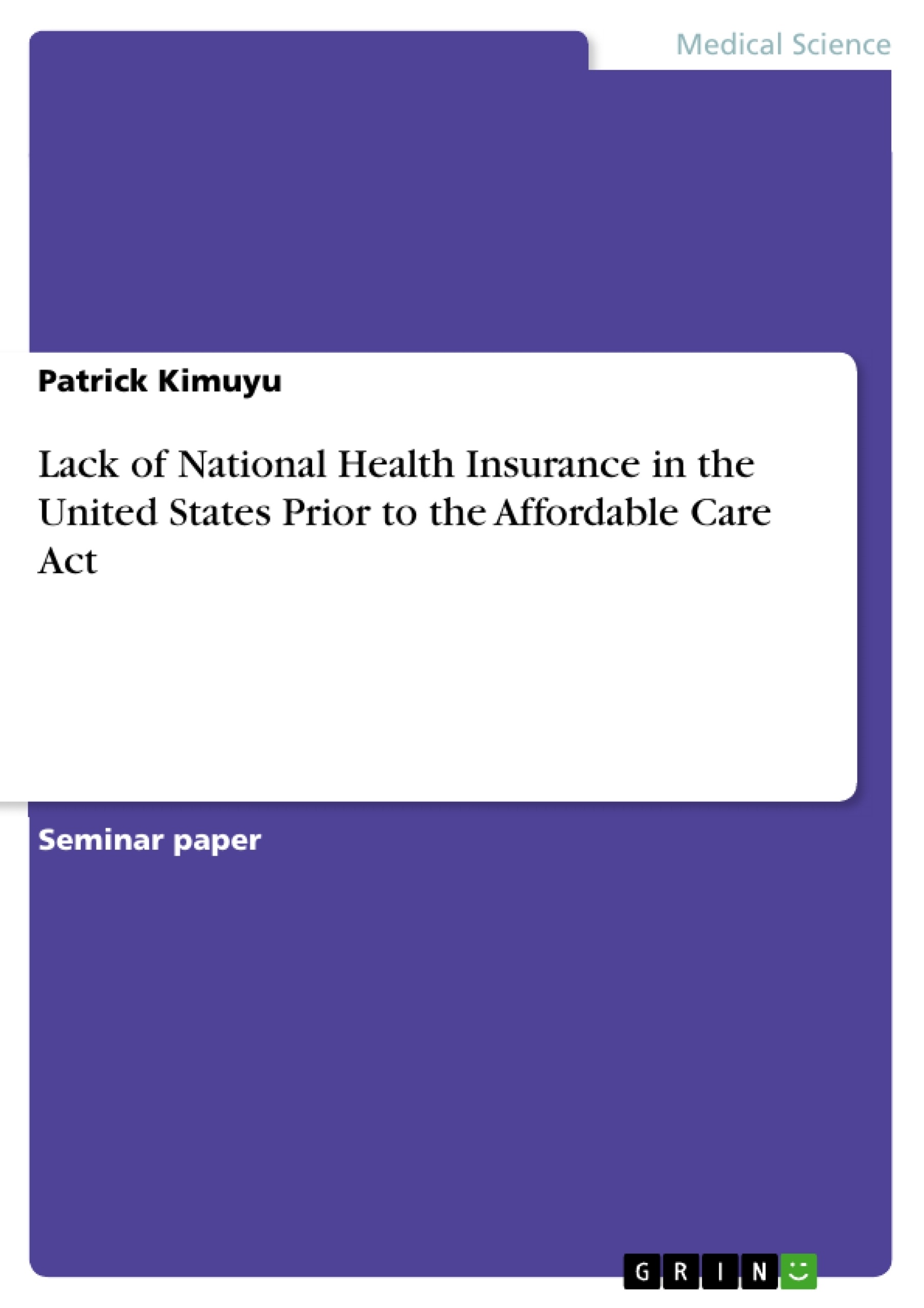The United States seems to be experiencing enormous challenges in public healthcare despite the numerous healthcare reforms, which have been enforced to enhance healthcare sustainability. For instance, the current burden of disease caused by obesity and its related health conditions appear to have become a potential healthcare problem because; the U.S Government has been spending colossal amounts of revenue to the healthcare sector to mitigate the issue. Recent healthcare reports indicate that, obesity consumes the highest percentage of healthcare expenditure and, this probably so because; obesity and its related health conditions such as cardiovascular disease, the heart disease and diabetes have been ranked among the top-five leading causes of mortality, in the U.S. In addition, other Non-communicable diseases such as cancer and arthritis are also exerting intense pressure on the U.S healthcare system. Secondly, the lack of national health insurance has emerged to be another significant challenge to the U.S healthcare, leading to the unprecedented surge of healthcare cost and inaccessibility to healthcare services. Healthpac (2013) states, “75% of all health care dollars are spent on patients with one or more chronic conditions, many of which can be prevented, including diabetes, obesity, heart disease, lung disease, high blood pressure, and cancer”.
Currently, there are about 48 million uninsured people, in the United States, which translates to 16.3% of the total U.S population (DeNavas-Walt et.al. 2012). It is surprising that the U.S is one of the wealthy industrialized nations in the world but, it does not have a universal healthcare system, which involves national health insurance and, this has led numerous healthcare consequences (Healthpac, 2013). Therefore, this research will give an overview on the lack of national health insurance, in the United States.
Inhaltsverzeichnis (Table of Contents)
- Introduction
- Health Insurance Coverage in the United States
- U.S Population without Health Insurance Coverage
- Access to Healthcare by the Uninsured
- Consequences of Lack of Insurance
- Conclusion
Zielsetzung und Themenschwerpunkte (Objectives and Key Themes)
This research aims to provide an overview of the lack of national health insurance in the United States and its consequences. The paper examines the current state of health insurance coverage, the uninsured population, the challenges they face in accessing healthcare, and the implications of lacking insurance.
- The state of health insurance coverage in the United States
- The challenges of being uninsured in the United States
- The impact of the lack of national health insurance on healthcare costs and accessibility
- The role of government-funded and private health insurance in the US system
- The consequences of lacking health insurance
Zusammenfassung der Kapitel (Chapter Summaries)
The introduction sets the context by outlining the challenges facing the US healthcare system, including the high burden of disease caused by conditions like obesity and the lack of national health insurance.
The chapter on health insurance coverage in the US analyzes the different types of health insurance providers, including government-funded programs like Medicare and Medicaid, and private health insurance. It explores the distribution of insurance coverage, the number of insured individuals, and the trends in insurance coverage over time.
Schlüsselwörter (Keywords)
The paper focuses on key concepts related to health insurance coverage, including national health insurance, uninsured population, access to healthcare, healthcare costs, government-funded insurance, private health insurance, and consequences of lacking insurance.
- Quote paper
- Patrick Kimuyu (Author), 2018, Lack of National Health Insurance in the United States Prior to the Affordable Care Act, Munich, GRIN Verlag, https://www.grin.com/document/428610



